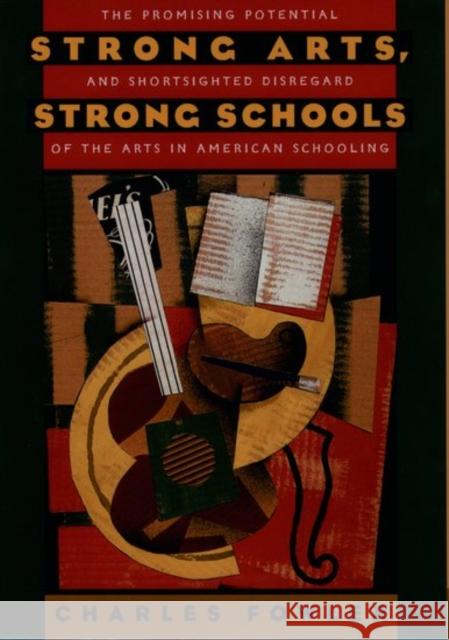Strong Arts, Strong Schools: The Promising Potential and Shortsighted Disregard of the Arts in American Schooling » książka
Strong Arts, Strong Schools: The Promising Potential and Shortsighted Disregard of the Arts in American Schooling
ISBN-13: 9780195100891 / Angielski / Twarda / 1996 / 240 str.
Strong Arts, Strong Schools: The Promising Potential and Shortsighted Disregard of the Arts in American Schooling
ISBN-13: 9780195100891 / Angielski / Twarda / 1996 / 240 str.
(netto: 135,79 VAT: 5%)
Najniższa cena z 30 dni: 137,76
ok. 30 dni roboczych.
Darmowa dostawa!
At a time when Americans are increasingly concerned with finding jobs and economic stability, supporting families, and surviving in the global economy, many consider the arts to be a luxury, a frivolous distraction which entices students away from real learning. In Strong Arts, Strong Schools, Charles Fowler argues that, far from a luxury, the arts are a vitally important part of our society and our schools.
Speaking directly to educators, policy makers, and parents alike, Fowler presents a compelling defense of the arts and their importance in our lives. The arts illuminate "life in all its mystery, misery, delight, pity and wonder." Without them, students are deprived of learning what it means to be truly human. The arts teach students how rather than what to think. Highlighting the crucial effect of the arts on learning, he contends that the arts teach skills that other basic subjects cannot--critical thinking and problem solving, judgment and independence, attention to detail and craftsmanship, and an openness to other cultures and ways of thinking. Arguing on behalf of the arts, Fowler shows how the arts can enliven and extend the entire school curriculum by integrating different subjects in innovative interdisciplinary ways, sparking the interest of at-risk or special needs students. "The best schools have the best arts programs," writes Fowler. "Excellence in education and excellence in the arts go hand in hand."
In eighteen compelling essays, Fowler demonstrates the importance of the arts in our culture and the necessity of rescuing the arts for our future. Beginning with an overview of the context in which the arts operate, he offers an honest and sometimes distressing overview of the state of education and arts education today. He then examines the arts and economics, presenting a carefully researched exposition of the significance of the arts and their relationship to science and industry. Showing how the arts provide a more comprehensive education, he shows why the arts engage students and make learning relevant and fun. Tackling the controversial question of curriculum, Fowler addresses such questions as who should study the arts, which arts, and whose culture should be taught. Citing a shameful neglect of creativity in our culture, he highlights the negligence of the schools in teaching students to be creative and inventive thinkers, and he shows the capacity of the arts to communicate these essential skills. Fowler concludes the book with suggestions for reform and with practical strategies for winning the support of school boards and school administrators. Finally asking "how do we get there," he offers specific recommendations for changing our schools, providing equal opportunity for all, and--perhaps most critically in today's economic climate--paying the bill.
In this elegantly written, passionately argued book, Fowler presents a convincing case for teaching the arts to all children. "A downtrodden army of cultureless children," Fowler warns, "is marching toward a barren and depleted adulthood and taking the future of our civilization with them." Strong Arts, Strong Schools is a clarion call to action for any teacher, parent, policy maker, or citizen concerned about the fate of the arts in American society and about the state of our schools.











